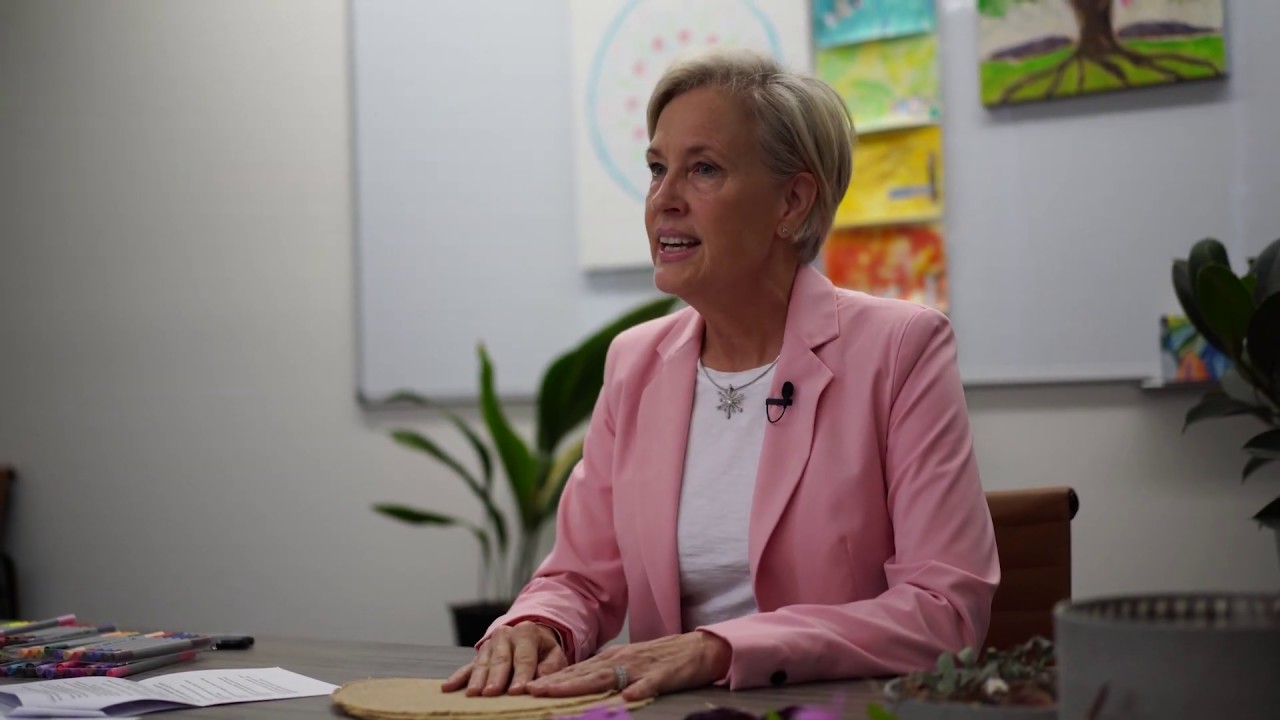Music And Art Therapy For Emotional And Mental Wellbeing - Healing Through Creativity
Music and art therapy for emotional and mental wellbeing has emerged as powerful and effective modality. Combining the expressive arts with therapeutic techniques, these approaches offer unique avenues for individuals to explore, process, and heal their inner experiences.
Author:Scarlet SunsetReviewer:Caden SteelheartJun 04, 20236.1K Shares116.1K Views

Music and art therapy for emotional and mental wellbeinghas emerged as powerful and effective modality. Combining the expressive arts with therapeutic techniques, these approaches offer unique avenues for individuals to explore, process, and heal their inner experiences.
Whether it's through creating art, playing an instrument, or engaging in musical activities, musicand art therapy provide transformative pathways for self-discovery, emotional expression, and personal growth.
In this article, we will delve into the profound impact of music and art therapy on emotional and mental wellbeing, exploring how these therapeutic practices can enhance self-awareness, foster emotional resilience, and promote overall psychological health.
What Is Music Therapy?

What is Music Therapy?
Music therapy is a scientifically proven method of treatment that employs music-based interventions to assist individuals in achieving their therapeutic objectives.
Music therapy is administered by licensed therapists and is intended to target various mental, physical, cognitive, and social challenges that may affect an individual's mental well-being.
The approach to music therapy may vary depending on the individual, however, it typically encompasses a blend of active and receptive techniques. Active music therapy involves the active engagement of a person in the creation of music, which may include activities such as composing, singing, chanting, or playing an instrument.
Receptive techniques typically center on the act of actively listening or responding to music, such as engaging in a discourse about the lyrics of a song or rhythmically moving to a beat.
What Is Art Therapy?

What is Art Therapy?
Art therapy is a therapeutic approach that utilizes creative techniques to enhance an individual's psychological, physiological, and emotional health. Throughout history, individuals have utilized art as a means of self-expression. However, it wasn't until the 1940s that art was formally recognized as a therapeutic tool for promoting healing.
The objective of art therapy is to facilitate individuals in expressing themselves and interacting with their therapist in a non-traditional manner. The utilization of art as a means of expression may facilitate individuals in exploring their emotions, managing their behaviors, and reconciling conflicts.
These benefits can potentially lead to a reduction in stress levels and an increase in self-esteem. Currently, there are various forms of art therapy available. Several prevalent categories include:
- Collaging
- Coloring
- Doodling
- Drawing
- Finger painting.
- Painting
- hotography
- Ceramics
- Sculpture
What Is Music And Art Therapy For Emotional And Mental Wellbeing?
Music and art therapy for emotional and mental wellbeing is a therapeutic approach that utilizes the expressive and creative qualities of music and art to promote healing, self-discovery, and overall psychological well-being.
It recognizes the profound connection between creativity, emotions, and mental health, offering individuals a safe and supportive space to explore and express their thoughts, feelings, and experiences through artistic means.
Music therapy involves the use of music, such as listening, creating, or playing instruments, to address emotional, cognitive, and social needs. It can help individuals process and regulate their emotions, reduce stress and anxiety, enhance self-awareness, and improve communication and interpersonal skills.
Art therapy, on the other hand, uses various art forms, including painting, drawing, sculpture, or collage, as a medium of self-expression and exploration. Through the creation of visual art, individuals can externalize and reflect upon their inner world, gain insights into their emotions and experiences, and develop healthy coping mechanisms.
Both music and art therapy provide a non-verbal and creative outlet for individuals to express and communicate their emotions, thoughts, and experiences that may be difficult to put into words.
They offer a holistic approach to emotional and mental wellbeing by engaging the senses, fostering self-reflection, promoting self-acceptance, and empowering individuals to discovertheir unique strengths and resilience.
Music and art therapy can be beneficial for various mental health concerns, including anxiety, depression, trauma, grief, and stress-related disorders. They are facilitated by trained professionals who guide individuals through the therapeutic process, using music and art as tools for self-exploration, growth, and healing.
Ultimately, music and art therapy for emotional and mental wellbeing provide individuals with a creative and empowering path towards greater self-understanding, emotional resilience, and overall psychological well-being.
Music And Art Therapy Benefits
Art and music treatments aren't so much about making a beauty as they are about getting to know yourself and getting better. There is no one way that works for everyone, so each person can find what works for them.
Art and music treatments were made to help people get better at what they do and enjoy life more. There are also other perks to using art in therapy, such as:
- Getting better mental health
- Getting rid of emotional or physical illness signs
- Getting better at recognizing and dealing with a wide range of symptoms
- Letting people get away from bad feelings or cravings
- Getting the brain to work better
- Getting better at communicating and being able to say what you want
- Taking care of past injuries in a safe place
- Getting rid of bad habits
Music Therapy Techniques For Emotional And Mental Wellbeing
Active Music Making
Engaging individuals in creating music using various instruments or their voice. This can include improvisation, playing musical games, or composing original music. Active music making promotes self-expression, emotional release, and can help individuals develop coping skills and enhance self-esteem.
Guided Music Listening
Selecting and listening to specific music tracks or compositions that are chosen to evoke desired emotional responses or support relaxation. The therapist guides the individual through the experience, encouraging reflection, emotional exploration, and promoting a sense of calm and well-being.
Songwriting And Lyric Analysis
Encouraging individuals to write their own songs or lyrics as a means of self-expression. This process allows individuals to articulate their thoughts, emotions, and experiences through creative writing. Analyzing and discussing song lyrics can also provide insights and facilitate therapeutic discussions.
Improvisation And Music Performance
Engaging individuals in improvisational activities, where they create music spontaneously. This technique promotes self-expression, emotional exploration, and can enhance confidence and social interaction.
Music performance, such as playing in a band or participating in a choir, can provide a sense of accomplishment and foster a supportive community.
Music-Assisted Relaxation And Guided Imagery
Using calming music combined with relaxation techniques to promote stress reduction and emotional well-being. This can involve deep breathing exercises, progressive muscle relaxation, or guided imagery, where individuals imagine positive and peaceful scenes while listening to music that complements the imagery.
Therapeutic Music Listening
Engaging in focused and intentional listening to specific music pieces chosen by the therapist. The music is carefully selected to match the individual's emotional needs, promote self-reflection, and facilitate the exploration of personal experiences, memories, and emotions.
Drumming And Rhythm-Based Activities
Utilizing rhythmic activities, such as drumming circles or playing percussion instruments, to promote emotional expression, stress reduction, and enhance motor coordination. Drumming and rhythm-based activities can provide a grounding and energizing experience for individuals.
Music And Movement
Combining music with movement exercises, such as dance or guided body movements, to promote physical and emotional expression. Music and movement can facilitate the release of tension, improve body awareness, and provide a sense of liberation and joy.
Art Therapy Techniques for Emotional and Mental Wellbeing:
Visual Art Creation
Engaging individuals in creating visual artworks using various materials such as paints, pastels, clay, or collage. This process allows individuals to express their emotions, thoughts, and experiences visually, fostering self-expression, self-awareness, and emotional release.
Mandala Creation
Using the creation of mandalas, intricate circular designs, as a therapeutic tool. The repetitive and focused nature of creating mandalas can promote relaxation, mindfulness, and a sense of inner balance and harmony.
Guided Drawing Or Painting
Following specific prompts or themes provided by the therapist to guide the art-making process. This technique can help individuals explore specific emotions, memories, or narratives, providing a structured framework for self-expression.
Sculpture And 3D Artwork
Engaging individuals in three-dimensional art creation using clay, wire, found objects, or other materials. Sculpture allows for tactile exploration and can provide a metaphorical representation of inner experiences or emotions.
Collage And Mixed Media
Utilizing the technique of collage to combine various materials such as images, photographs, magazine cutouts, and textures to create visual compositions. Collage encourages exploration, symbolism, and the integration of different elements to express personal narratives and experiences.
Mask-Making
Encouraging individuals to create masks as a means of exploring different aspects of their identity or emotions. Mask-making provides a symbolic and transformative experience, allowing individuals to externalize and explore different parts of themselves.
Narrative Art
Using art-making to tell stories or create visual narratives that represent personal experiences, challenges, or aspirations. This technique can foster reflection, insight, and a sense of empowerment as individuals visually express their personal journeys.
Art And Writing Integration
Combining visual art creation with journaling or written reflection. This technique allows for a deeper exploration of thoughts and emotions, encouraging individuals to combine words and imagery to express and process their experiences.
People Also Ask
Can Music And Art Therapy Help With Anxiety And Stress?
Music and art therapy can be beneficial for individuals experiencing anxiety and stress. Engaging in creative expression through music and art can provide a therapeutic outlet to release emotions, reduce stress levels, and promote relaxation.
These modalities offer a nonverbal and expressive approach to explore and process feelings, allowing individuals to find relief and develop coping mechanisms.
How Does Music And Art Therapy Promote Emotional Healing?
Music and art therapy promote emotional healing by providing a means of self-expression and exploration. Through creative activities, individuals can tap into their emotions, gain insights into their experiences, and express their feelings in a safe and supportive environment.
This process can facilitate emotional release, enhance self-awareness, and contribute to the healing and integration of past or present emotional wounds.
What Types Of Art Activities Are Used In Art Therapy?
Art therapy incorporates a variety of art activities, depending on the individual's needs and preferences. Common art activities used in therapy include drawing, painting, collage-making, sculpting, and mixed media.
These activities offer different mediums and techniques for individuals to express themselves creatively and engage in the therapeutic process.
How Does Music Therapy Support Mental Wellbeing?
Music therapy supports mental wellbeing by harnessing the power of music to address emotional, cognitive, and social needs. It can enhance mood, reduce symptoms of depression and anxiety, improve self-esteem, and promote self-expression.
Through listening to or creating music, individuals can experience emotional resonance, build positive connections, and develop coping strategies for managing mental health challenges.
Is Music And Art Therapy Suitable For Everyone?
Yes, music and art therapy can be beneficial for people of all ages and backgrounds. It is a flexible and adaptable form of therapy that can be tailored to meet individual needs and goals.
Music and art therapy can support individuals with a wide range of emotional and mental health concerns, including but not limited to anxiety, depression, trauma, and stress-related disorders.
Final Thoughts
Music and art therapy for emotional and mental wellbeing hold immense potential. Through creative expression and therapeutic techniques, these modalities provide individuals with powerful tools to navigate their inner worlds, process emotions, and foster healing.
Music and art therapy offer a safe and supportive space for self-discovery, emotional expression, and personal growth, allowing individuals to tap into their inner resources and cultivate a sense of empowerment.
With their holistic approach, music and art therapy contribute to enhancing self-awareness, building emotional resilience, and nurturing overall psychological health.
Embracing the transformative power of music and art, we can unlock new pathways to emotional and mental wellbeing, fostering a harmonious connection between the creative spirit and inner healing.

Scarlet Sunset
Author
Scarlet Sunset is a captivating and confident transgender individual who radiates sensuality and embraces her unique beauty. With a radiant smile and a touch of red lipstick, she captivates hearts by the poolside as the sun dips below the horizon, casting a warm glow on her unforgettable presence.
Despite societal norms and expectations, Scarlet celebrates her body, proudly defying conventional standards of beauty. Her curves tell a story of self-acceptance and empowerment, challenging stereotypes and inspiring others to embrace their own bodies without reservation.

Caden Steelheart
Reviewer
Caden Steelheart, an enigmatic author, weaves tales that immerse readers in the depths of sin city's underbelly. With his words as a weapon, he crafts literary masterpieces that reflect the dark and dangerous spirit of the city. Caden's writing captures the gritty essence of sin city, delving into the intricacies of its characters and the moral complexities that define their existence.
Born amidst the shadows, Caden draws inspiration from the relentless chaos and unforgiving nature of the city. His words carry the weight of experience, creating a vivid and haunting portrayal of sin city's undercurrents. Through his stories, he explores the blurred lines between right and wrong, exploring themes of power, deception, and redemption.
Caden Steelheart's literary prowess has made him a name whispered in literary circles, captivating readers with his ability to immerse them in sin city's intricately woven tapestry. With each written word, he invites readers to journey into the darker realms of the human experience, offering them a glimpse into the secrets and sins that shape the city's inhabitants. Caden Steelheart, a master of capturing the essence of sin city through his writing, continues to captivate audiences with his haunting and evocative narratives.
Latest Articles
Popular Articles